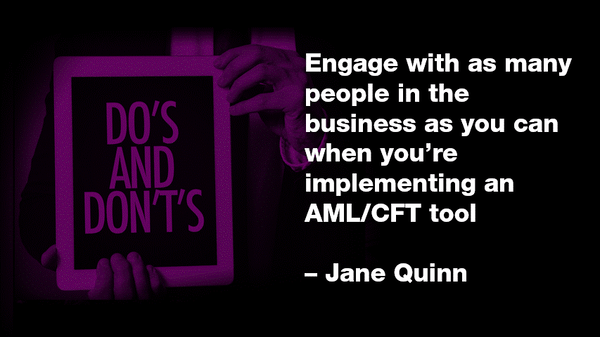How can remitters and foreign exchange providers meet their AML/CFT obligations more easily?
It's no secret that the remittance sector is high risk for money laundering. Regulators around the world place remittance providers, money service businesses, and currency exchange houses high on their watchlists. And of course money laundering has only increased around the world since the pandemic hit, putting the industry on high alert.
Depending on how many customers, transactions, and regulatory reports you're dealing with, the cost of complying with regulations can be high, though nothing compared with the cost of not complying!
The challenges facing the remittance industry are compounded by changes in regulations, customer behaviour, the global environment, and business expansion. But regulatory obligations and risks aside, remitters have a critical role to play in the global fight against financial crime.
So how can you reduce your risk, do your part, and meet your obligations cost-effectively? Read on to learn how automation, combined with human intelligence, is a winning combination for successful compliance.
What went down at our recent remittance webinar
Proudly facilitated by Ashley Bass, Head of Product at Jade Software, we were joined by experts in the remittance sector to discuss:
- Critical steps for creating a robust AML programme and how automation can help
-
What to look for in an automated AML solution
-
How to approach implementation and move forward once you select an automation tool
And we got some really fertile and thought-provoking insights from our panellists:
Jane Quinn – Group Operations Risk and Compliance Manager, Fexco Pacific
Paddy Oliver – Managing Director, AML Experts
Colin Dixon – Senior Product Manager for Jade ThirdEye, CAMS
Has your business reached a tipping point?
If you're getting to the stage of needing to hire more staff to process data, it's probably time to step away from the spreadsheets and get a smart software tool to do the heavy lifting for you. Trying to manage your compliance obligations manually soon becomes untenable as your business grows, legislation changes, and the world shifts.
Thankfully in this day and age we're no longer doomed to mind-numbing tasks. Instead of compliance officers spending their valuable time and energy processing data, they can get software to do this for them in a matter of seconds so they can focus on the skilled work of analysing alerts and understanding their customers.
An automated system can also show you patterns of behaviour that you'll never be able to detect with spreadsheets.
"When we were still using spreadsheets we'd end up looking at transactions we’d already seen. It just became madness really. Before we got Jade ThirdEye we were looking at hiring an additional 15 staff to try and stay on top of processing all the data. We kept falling behind, which made us uneasy" – Jane Quinn
So, how do you implement an automated AML solution?
First of all, our panellists recommend you address these questions thoroughly:
- What problem are you trying to solve?
- What particular risks does your business face and how could an automated tool mitigate these?
- What exactly are your compliance obligations?
- What do different AML software vendors offer you?
When choosing an automation tool, it's really important to have local support. If you need urgent help it pays to have someone in your region who can support you right away. And global vendors don't necessarily understand the subtleties of your jurisdiction. As Paddy pointed out, an out-of-the-box solution that's 80% effective isn't going to cut it. Not being able to detect 20% of your suspicious activity can get you in a lot of trouble.
Before you implement a solution, we also recommend you take the time to sort out your data. As Colin emphasized, no matter how good an automation tool is, it can't produce anything useful with poor quality data. It's also important to check whether a vendor will be able to get your data into their system. As Jane pointed out, Fexco Pacific doesn't hold unique customer numbers, so that ruled out a few providers.
We also recommend you give your business enough time to implement a new tool properly. Create a plan and don't underfund the project. Engage the key people in your business so everyone is on board and understands what you're doing and why.
You'll also need to test your new tool with your data before you go live and keep making adjustments over time. This will help you get the most out of the tool and respond to changes in your business and the world as they happen. Implementing an automated AML solution might be a one-off project, but monitoring transactions and screening customers is an ongoing one.
Final pro-tips from our panellists
Thanks to everyone who tuned in to the webinar and quizzed our panellists. It's great to get insight from people on the front line and it's heartening to know that meeting your AML obligations fosters safer communities.
We hope you have a clearer idea of how automated AML software and quality data can take the weight off compliance officers so they can focus on what's really important and stay one step ahead of cyber criminals.

Get in touch with us!

